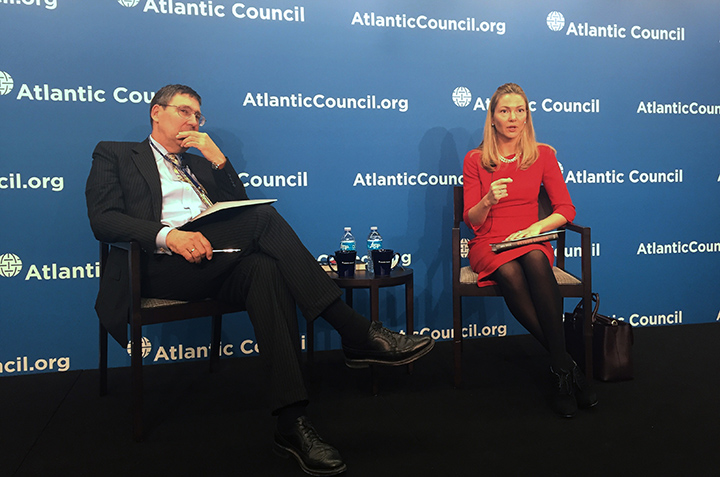 Russian President Vladimir Putin’s goal of restoring his country’s role in shaping the politics and policies of its near-neighbors—nations that were once part of the Soviet Union or the Russian Empire—is rooted in Tsarist “Russification policies,” according to Agnia Grigas, the author of a new book that takes a systematic look at the Kremlin’s policies of reimperialization.
Russian President Vladimir Putin’s goal of restoring his country’s role in shaping the politics and policies of its near-neighbors—nations that were once part of the Soviet Union or the Russian Empire—is rooted in Tsarist “Russification policies,” according to Agnia Grigas, the author of a new book that takes a systematic look at the Kremlin’s policies of reimperialization.
Tsarist policies made the Russian language and the Cyrillic alphabet official, while banning native ones on most of the subjugated territories, Grigas told the New Atlanticist. Other Tsarist policies included “ethnic cleansing, resettlement and deportation of locals, and colonization by Russians to create multiethnic populations in newly acquired lands,” she said, adding that later, in the Soviet Union, Josef Stalin’s ethnic policies “continued the Tsarist trajectory.”
In Beyond Crimea the New Russian Empire, Grigas traces a clear pattern of soft power policies in the post-Soviet space culminating in the annexation of Crimea in March of 2014.
“Before Russia invaded Crimea I had a sense of déjà vu in the rhetoric coming out of the Kremlin,” Grigas said at an event at the Atlantic Council on March 9. “The idea that Euromaidan was a threat to Russian ‘citizens,’ it was exactly like the rhetoric surrounding the Baltics, Georgia, and Transistria in the late 80s and 90s.”
The pattern that Grigas described pays particular attention to Kremlin policies directed at Russian “compatriots”—a broad term used to describe ethnic Russians, Russian speakers, and Russian citizens living outside Russia.
In showing the strategic use of soft power policies, such as passportization, Grigas highlights a pattern that can culminate, as in the case of Georgia and Ukraine, in Russian military intervention. Ironically, most Russian intervention has occurred under the premise of protecting the human rights of Russian “compatriots” in areas where no human rights violations have been reported. And, yet, it is in regions under Russian influence and control where most analysts find evidence of abuse.
“We are witnessing increasing oppression of non-Russian ethnic groups in areas of ‘Russian interest,’ especially Crimea and Abkhazia,” said John E. Herbst, Director of the Atlantic Council’s Dinu Patriciu Eurasia Center. Herbst, a former US Ambassador to Ukraine, joined Grigas in a discussion on Russia’s contemporary empire building.
Grigas explained that the Kremlin’s policies toward compatriots strategically leverage Russia to reestablish its historical control in the regions and nations bordering Russia. However, how does one explain the frozen conflict status of breakaway regions such as Transnistria and Abkhazia? Both regions claim allegiance to Russia, and yet not only has Russia not annexed those regions, in the case of Transnistria, Russia has not even recognized the “state,” said Grigas. She concluded that while her book does the important work of establishing a clear pattern, further study is needed to understand the extent of Kremlin reimperialization policies.
Russia’s military campaign in Syria has further complicated the understanding of the patterns of Russian military intervention. Grigas notes that while Syria is not part of Russia’s historical sphere of influence, the rhetoric coming out of the Kremlin on Syria is almost identical to that used to describe Ukraine. This rhetoric positions Russia as saving Orthodox Christians in Syria the same way it positioned Russia as saving ethnic Russians in Ukraine.
As Grigas’ work highlights, the link between Russian intervention abroad and rhetorical propaganda at home is a strong indicator of where the Kremlin is interested in expending political, military, and economic capital to gain influence.
Mikaila Altenbern is a communications coordinator at the Atlantic Council.
Image: John E. Herbst, Director of the Atlantic Council’s Dinu Patriciu Eurasia Center, participated in a discussion with Agnia Grigas on her new book, Beyond Crimea: The New Russian Empire, at the Atlantic Council in Washington on March 9. (Atlantic Council)
